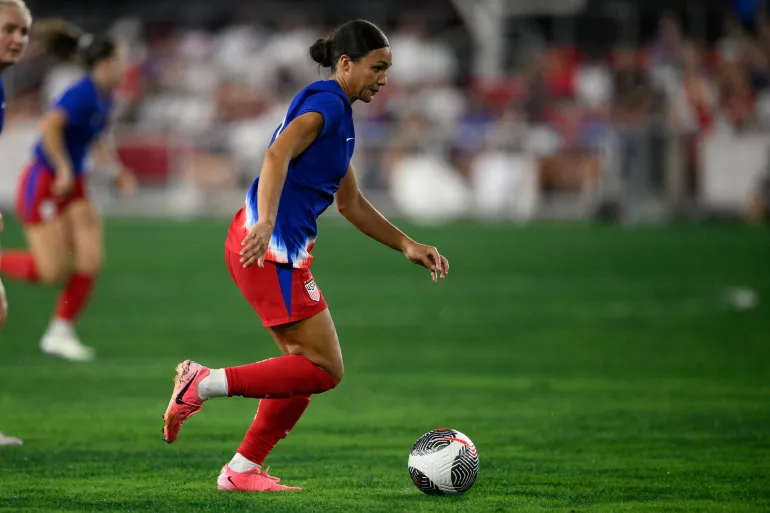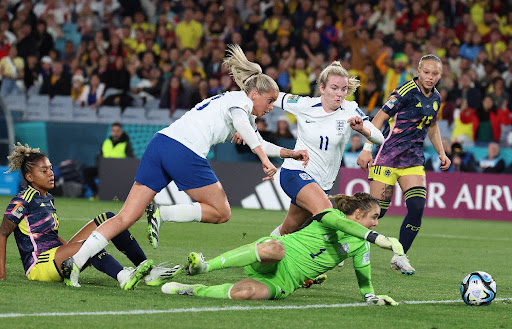Introduction: The Road to the 2025 Women’s World Cup
The 2025 FIFA Women’s World Cup is rapidly approaching, and the global football community is buzzing with excitement. Set to take place in Australia and New Zealand, this edition of the tournament promises to be one of the most competitive and thrilling in history. With the United States Women’s National Team (USWNT) coming off a historic win at the 2019 World Cup, the question on everyone’s mind is: Can they defend their title, or will European teams, many of whom have made impressive strides in recent years, finally rise to the occasion and dominate on the world stage?
The USWNT has long been the dominant force in women’s football, but the emergence of strong teams from Europe—such as The Netherlands, England, and France—has created new challengers. The 2025 tournament will feature 32 teams for the first time, further expanding the competition and adding new dimensions to the contest. As the tournament draws closer, fans and analysts alike are closely watching the teams that will emerge as the true title contenders.
In this article, we will take a detailed look at the USWNT’s quest for a third consecutive World Cup title, the growing strength of European teams, and the possible challenges and surprises that could unfold at the 2025 FIFA Women’s World Cup.
Section 1: The USWNT’s Continued Dominance in Women’s Football
1.1 The Legacy of the U.S. Women’s National Team
The USWNT has long been considered the gold standard in women’s football. With four FIFA Women’s World Cup titles (1991, 1999, 2015, and 2019), they have established themselves as the most successful team in World Cup history. Over the years, the U.S. has boasted some of the greatest players the sport has ever seen, from Mia Hamm to Abby Wambach and Megan Rapinoe.
However, even with their rich history of success, the landscape of women’s football is evolving, and the competition is closing in. The USWNT’s quest for a third consecutive World Cup title is no easy feat. Despite dominating in recent years, they will have to face new challenges, including increasingly competitive European teams and other nations that are rapidly improving.
1.2 Key Players and Tactical Approaches
Under the leadership of head coach Vlatko Andonovski, the USWNT has evolved tactically, though some of their performances in recent international tournaments have shown vulnerabilities. The team still has a strong core of players, including Alex Morgan, Lindsey Horan, and Crystal Dunn, who are all capable of leading the charge in 2025.
However, the question remains: Can the team maintain its dominance and overcome the rising challenges from Europe? The USWNT’s tactical flexibility, depth of talent, and experience in high-pressure situations will be crucial factors in their title defense.
Section 2: The Rise of European Powerhouses
2.1 The Growing Strength of European Teams
In the last decade, European teams have made huge strides in women’s football. Nations such as England, Germany, France, and The Netherlands have emerged as legitimate contenders, challenging the historical dominance of the USWNT. The 2021 UEFA Women’s Euro and the growing professionalism in top European leagues have played pivotal roles in raising the level of competition.
- England: The Lionesses, under coach Sarina Wiegman, have shown tremendous growth, winning the UEFA Women’s Euro 2022 on home soil. England’s combination of tactical discipline and attacking flair makes them one of the top contenders for the 2025 World Cup. With players like Beth Mead, Lucy Bronze, and Lauren Hemp, England has a blend of experience and youthful exuberance that could propel them to their first World Cup title.
- France: France has always been a strong contender, but they are now closer than ever to winning their first major international trophy. With world-class players such as Wendie Renard, Amandine Henry, and Eugénie Le Sommer, France has a talented squad that can match up against any team in the world. Their strong performances in recent tournaments, including a runner-up finish in the 2019 World Cup, demonstrate their growing potential.
- The Netherlands: The Dutch team, runners-up in the 2019 World Cup, has been one of the standout teams in recent years. Sarina Wiegman’s tactical approach to the team, which was instrumental in the team’s success, is now carried forward under Mark Parsons. Players like Vivianne Miedema, Lieke Martens, and Danielle van de Donk make the Netherlands a dangerous side, and they will be looking to improve on their 2019 performance and secure their first World Cup title.
- Germany: Germany remains a perennial powerhouse in women’s football. With their mix of experienced players like Alexandra Popp and emerging talents like Lea Schüller, the Germans will be looking to reclaim the World Cup title they last won in 2003. Germany’s solid defensive structure and efficient attacking play make them a team to watch.
2.2 The Impact of Club Football and Investment in Europe
The rise of European teams has been significantly bolstered by the increased investment in women’s football, particularly at the club level. The growing popularity and financial backing of leagues like England’s FA Women’s Super League (WSL), France’s Division 1 Féminine, and Germany’s Frauen-Bundesliga have played a crucial role in the development of top-tier talent.
European clubs such as Barcelona, Chelsea, and Lyon have raised the standard for women’s club football, providing a platform for players to reach the highest level of competition. The strength of these clubs has translated directly into stronger national teams, as more players now have access to world-class coaching, facilities, and international exposure.
Section 3: Other Contenders and Dark Horses
While the U.S. and European teams are the clear favorites, the 2025 Women’s World Cup will likely feature a number of surprise teams. These teams may not have the same historical pedigree as the U.S. or Europe’s top nations, but they possess the potential to make an impact.
3.1 Australia – The Host Nation
Australia, as the host nation, will be looking to make a statement in front of their home crowd. With players like Sam Kerr, who is considered one of the best forwards in the world, Australia will be determined to make a deep run in the tournament. The home advantage and the energy of the crowd could be a significant motivator for the Matildas as they look to improve on their previous performances.
3.2 Brazil – The South American Giant
Brazil, led by the incomparable Marta, remains a force in women’s football. While they haven’t been able to capture a World Cup title, they have consistently been among the top contenders. Brazil’s attacking prowess, led by Marta, Andressa Alves, and Debinha, will make them a tough opponent for any team.
3.3 Canada – Strong and Resilient
Canada, the Olympic gold medalists from Tokyo 2020, will be one of the teams to watch in 2025. With a well-balanced squad, including standout players like Christine Sinclair, Janine Beckie, and Kadeisha Buchanan, Canada’s tactical discipline and strong defensive structure could see them making another deep run in the World Cup.

Section 4: Key Questions for the 2025 World Cup
4.1 Will the USWNT’s Experience Hold Up Against Younger Teams?
The USWNT’s experience in major tournaments will certainly be a factor in their success. However, the emerging strength of European teams, particularly England and France, may challenge their dominance. Can the U.S. team, with their veteran players, adapt to the tactical innovations of the newer teams? Or will their experience and mentality be enough to see them through?
4.2 Can European Teams Overcome the U.S. in the Global Stage?
The growing strength of European teams has been the story of recent years, but can they finally break the U.S.’s World Cup dominance? England’s success in the UEFA Women’s Euro 2022 and France’s consistent performances make them credible threats to the U.S. team. Can these teams execute on the world stage and make history?
4.3 Will the Host Nation, Australia, Be a Contender?
With the tournament being held on their home turf, Australia will be under intense pressure but also motivated to perform well. The support of the home crowd could be a major factor, but will their squad, led by Sam Kerr, have the firepower to match the world’s best teams?
Conclusion: A Thrilling Battle for the Title
The 2025 FIFA Women’s World Cup is shaping up to be one of the most exciting and competitive editions of the tournament in history. The USWNT is still the favorite to win a third consecutive title, but the rise of powerful European teams such as England, France, and The Netherlands means that there will be formidable competition for the top spot. As the tournament draws closer, the stakes continue to rise, and the battle for global supremacy in women’s football has never been more intense.
Whether the U.S. team can defend its title, or if a European powerhouse will finally dethrone them, remains to be seen. Regardless of the outcome, the 2025 Women’s World Cup promises to be an unforgettable celebration of the growth and excitement of women’s football, bringing new challenges, new stars, and a new chapter in the history of the sport.


































Discussion about this post